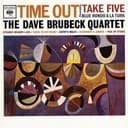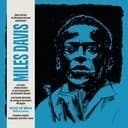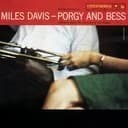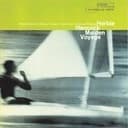scale
F♯ Bebop Major
The F♯ Bebop Major scale is an eight-note jazz scale that transforms the traditional F♯ Major scale into a versatile improvisational tool by adding a chromatic passing tone between the fifth and sixth degrees. This distinctive modification creates a scale perfectly suited for playing over major chords while maintaining strong melodic lines that emphasize chord tones on downbeats.
Built from the notes F♯, G♯, A♯, B, C♯, D (C𝄪), D♯, and E♯ (F), this scale features an augmented fifth (D) as the added chromatic tone. The F♯ Bebop Major scale is particularly valuable for jazz pianists improvising over F♯ major and F♯ major seventh chords, offering smooth voice leading and natural rhythmic placement of chord tones when played in eighth notes.
The eight-note structure of the bebop major scale solves a common problem in jazz improvisation: when playing continuous eighth notes over 4/4 time, the scale ensures that chord tones consistently fall on strong beats. This makes the F♯ Bebop Major scale essential for creating fluid, professionally-sounding bebop lines that swing naturally and outline harmonic progressions clearly.
Scale Structure and Formula
The F♯ Bebop Major scale follows the interval formula 2-2-1-2-1-1-2-1 (whole-whole-half-whole-half-half-whole-half steps). This pattern creates an octatonic scale with these specific intervals from the root: root (1), major second (2), major third (3), perfect fourth (4), perfect fifth (5), augmented fifth (♯5), major sixth (6), and major seventh (7).
The crucial chromatic passing tone appears between C♯ (the fifth) and D♯ (the sixth), creating a half-step movement that adds melodic interest while preserving the major scale character. This placement differs from the bebop dominant scale, where the chromatic tone appears between the flat seventh and root, making the major bebop particularly effective for major tonalities.
Jazz Improvisation Applications
Jazz pianists use the F♯ Bebop Major scale extensively when soloing over F♯ major seventh, F♯6, and F♯maj9 chords. The scale works exceptionally well in ii-V-I progressions in F♯ major, particularly when the I chord is sustained or emphasized. The chromatic passing tone creates smooth connections between chord tones, allowing for the flowing, speech-like phrasing characteristic of classic bebop style.
This scale is particularly effective in medium to up-tempo swing tunes where eighth-note lines dominate. Players like Barry Harris popularized specific bebop major scale patterns that create enclosures around chord tones, using the chromatic note as both an approach tone and a way to maintain rhythmic integrity. The scale also works beautifully for creating descending lines that land perfectly on target notes.
Beyond straight-ahead jazz, the F♯ Bebop Major scale appears in contemporary jazz, fusion, and even sophisticated pop arrangements. Its ability to bridge the gap between major scale purity and chromatic sophistication makes it valuable for any style requiring melodic improvisation over major harmonies with a jazz flavor.
Piano Technique and Fingering
Practicing the F♯ Bebop Major scale requires adapting traditional major scale fingerings to accommodate the eighth note. Since F♯ major uses numerous black keys (six sharps), pianists should develop comfortable fingering patterns that maintain evenness across the chromatic passing tone. Standard approaches include using the thumb on F♯ and playing the chromatic D with the finger that naturally follows the hand position.
Focus on playing the scale in steady eighth notes at various tempos, ensuring that chord tones (F♯, A♯, C♯, E♯) consistently fall on beats 1, 2, 3, and 4. This develops the internal timing that makes bebop lines swing authentically. Practice ascending and descending patterns, as well as starting the scale from different notes within the octave to build flexibility in real-time improvisation.
Advanced exercises include playing the F♯ Bebop Major scale in thirds, sixths, and other intervals, incorporating the chromatic tone smoothly throughout. Combining the scale with arpeggios of the common chords (F♯maj7, G♯m7, A♯m7, Bmaj7, C♯7) creates comprehensive vocabulary for navigating progressions in F♯ major with confidence and creativity.
Harmonic Context and Chord Progressions
The F♯ Bebop Major scale works over several diatonic chords in the key of F♯ major, including F♯maj7 (Imaj7), G♯m7 (ii7), A♯m7 (iii7), Bmaj7 (IVmaj7), C♯7 (V7), and D♯m7 (vi7). It is most effective over the tonic F♯ major chord, where all scale tones relate directly to the harmony. The chromatic D natural creates brief, pleasing tension that resolves immediately to the diatonic D♯.
In jazz standards, the F♯ Bebop Major scale appears when tunes modulate to F♯ or contain extended passages in this key. Given that F♯ major is less common than keys like C, F, or B♭ major, it often appears in tunes written for horn players or in specific instrumental jazz compositions. The scale provides elegant solutions for melodic lines that maintain forward motion without sounding overly scalar.
Combining the F♯ Bebop Major scale with other bebop scales creates a complete improvisational vocabulary. For example, pairing it with the C♯ bebop dominant scale over a ii-V in F♯ major (G♯m7-C♯7-F♯maj7) creates cohesive, professional-sounding lines. Understanding these relationships helps pianists navigate complex harmonic progressions with clarity and purpose.
Practice Strategies and Musical Development
Begin practicing the F♯ Bebop Major scale by playing it slowly with a metronome, ensuring even note spacing and clear articulation of each pitch. Gradually increase the tempo while maintaining consistency, paying special attention to the chromatic passing tone. Record yourself playing and listen critically for any rhythmic irregularities or timing issues that might disrupt the swing feel.
Create simple exercises using the scale over a F♯maj7 chord vamp, exploring different starting points and rhythmic patterns. Practice playing the scale in sequences (groups of three, four, or five notes), which naturally creates interesting melodic shapes. Learn to connect the scale with common bebop vocabulary like enclosures, approach patterns, and chromaticism to develop an authentic jazz language.
Study recordings of bebop masters improvising in F♯ major or over F♯ major chords, transcribing short phrases that use the bebop major scale sound. Analyze how they incorporate the chromatic passing tone and where they choose to use it versus the pure major scale. This ear training develops the musical judgment needed to use the F♯ Bebop Major scale tastefully and effectively in your own playing.
- Symbol
- F♯ bebop
- Key
- f sharp
- Scale Type
- bebop major
- Cardinality
- octatonic
- Number of Notes
- 9
- Notes
- F♯, G♯, A♯, B, C♯, D, D♯, F, F♯
- Intervals from Root
- M2, M3, P4, P5, m6, M6, M7





